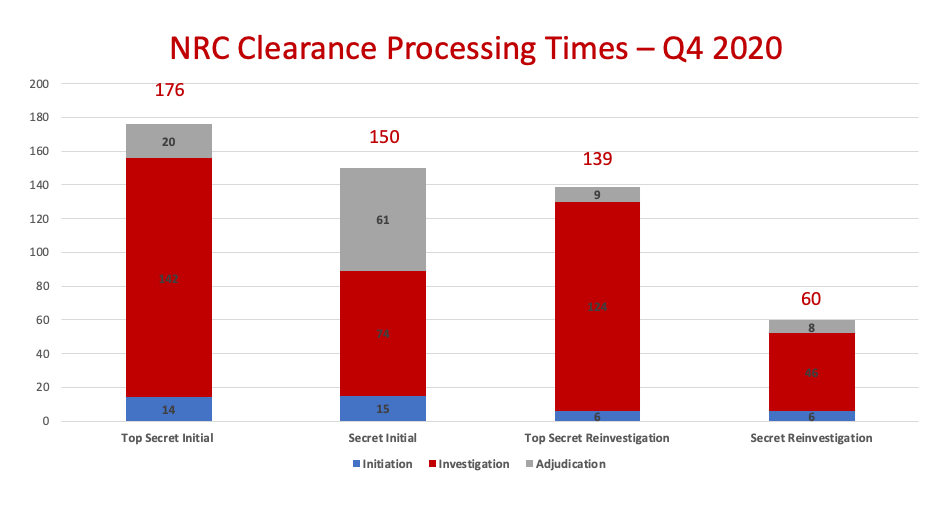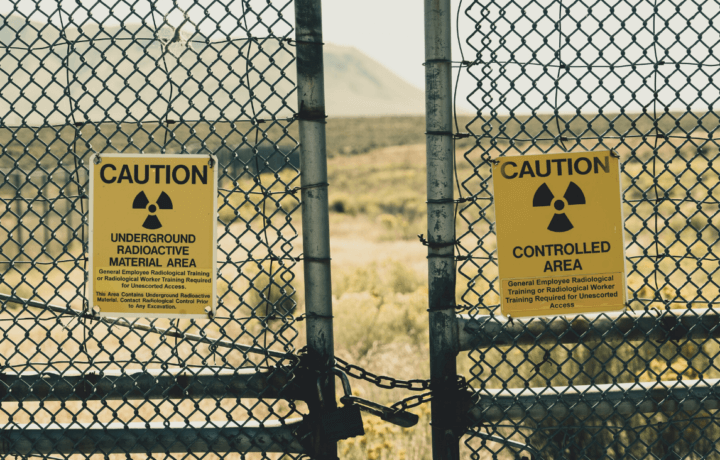The United States Nuclear Regulatory Commission (NRC) is an independent agency that Congress passed in 1974 in order to ensure the safety of every individual and the overall environment from radioactive harm. The NRC focuses on minimizing radioactive exposure, regulation of radioactive materials, nuclear medicine, and finally, radiation monitoring at nuclear power plants. They’re preventing mass destruction from uncontrollable energy. In Q4 of 2020, the NRC security clearance processing times are moving at an encouraging pace. Considering the NRC’s important role in safeguarding the U.S. and its environment, it’s important that the right people are provided access to classified information within a reasonable amount of time. Of course, in the midst of a pandemic, the way we work has perhaps forever changed – NRC clearance processing efforts along with it.
NRC 2020 Q4 PROCESSING TIMES
The chart below shows the processing times for the NRC’s Fiscal Year (FY) 2020 4th quarter by security clearance level for the three steps: application, investigation and adjudication, along with reinvestigations.

THE NUMBERS
Not surprisingly, the investigation period is the longest portion of the clearance process, taking up roughly 74% of the overall processing time in Q4. Of course, given that the Top Secret investigation is more time consuming, that process takes longer than the Secret security clearance process, with an initial Top Secret security clearance taking the most time for the NRC.
In quarter 4, initial clearances are taking longer to process. Top Secret security clearances took an average processing time of 159 days in Q1, but in Q4, a Top Secret averaged 176 days. Secret security clearances had a similar response, with an additional 24 days to process in Q4 compared to Q1. On the flip side, reinvestigation process time reduced in Q4. Top Secret Q4 reinvestigations reduced processing times by 11 days from Q1 and Secret Q4 reinvestigations reduced by 26 days from Q1. With or without a pandemic, the clearance processing times are headed in the right direction.
NRC Classified Information Sectors
Within the NRC, there are two separate sectors of classified information. The first sector is called National Security Information (NSI). NSI is classified by an executive order from the federal government. In general, if this were to be compromised by an outside force, it would provide a serious threat to our national security. The second sector of classified information is known as Restricted Data (RD). Restricted Data is protected by the Atomic Energy Act of 1954, which was amended from the Atomic Energy Act of 1946. This provision was put forth to protect the United States from exchanging of this restricted data because if this data were to be exposed to foreign entities, it would assist in the design, manufacturing, or utilization of nuclear weapons. This process of garnering clearance for the NRC should be as extensive as possible.




